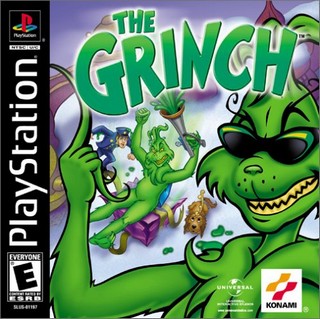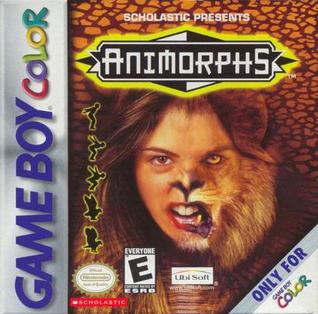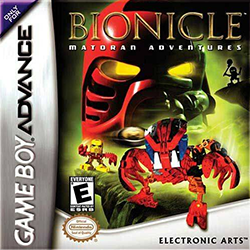
Super Mario World 2: Yoshi's Island is a 1995 platform game developed and published by Nintendo for the Super Nintendo Entertainment System (SNES). The player controls Yoshi, a friendly dinosaur, on a quest to reunite baby Mario with his brother Luigi, who has been kidnapped by Kamek. Yoshi runs and jumps to reach the end of the level while solving puzzles and collecting items with Mario's help.

Super Mario Bros.: The Lost Levels is a 1986 platform game developed and published by Nintendo. A sequel to Super Mario Bros. (1985), it was originally released in Japan for the Family Computer Disk System as Super Mario Bros. 2 on June 3, 1986. Nintendo of America deemed it too difficult for its North American audience and instead released an alternative sequel, also titled Super Mario Bros. 2, in 1988. It was remade and renamed The Lost Levels for the 1993 Super Nintendo Entertainment System compilation Super Mario All-Stars, serving as its first international release. It has been rereleased for Game Boy Color, Game Boy Advance, Wii, Wii U, Nintendo 3DS and Nintendo Switch.

Jumping Flash! is a 1995 platform video game developed by Exact and Ultra and published by Sony Computer Entertainment for the PlayStation. It was originally released on April 28, 1995 in Japan, September 29, 1995 in PAL territories as well as November 2, 1995 in North America.

DK: King of Swing is a 2005 puzzle-platform game developed by Paon and published by Nintendo for the Game Boy Advance. King of Swing diverges from the gameplay of other games in the Donkey Kong series, instead featuring characters rotating around pegs to progress similar to the NES game Clu Clu Land. King of Swing has a single-player adventure mode, as well as a competitive multiplayer mode for up to four players. The game received mixed reception.

Star Wars Episode I: Jedi Power Battles is an action Star Wars video game set during the time frame of Star Wars: Episode I – The Phantom Menace. The game was first released for the PlayStation, and afterwards for the Dreamcast and the Game Boy Advance. A remastered version of the game is scheduled to release for Windows, Nintendo Switch, PlayStation 4, PlayStation 5, Xbox One, and Xbox Series X/S in January 2025.

Teenage Mutant Ninja Turtles, known as Geki Kame Ninja Den in Japan and Teenage Mutant Hero Turtles in Europe, is a 1989 action-platform game developed and published by Konami for the Nintendo Entertainment System. In North America it was published under Konami's Ultra Games imprint in the US and the equivalent PALCOM brand in Europe and Australia.

Over the Hedge is a platform video game published by Activision and based on the film of the same name. The game was released on May 9, 2006 on Microsoft Windows and the PlayStation 2, Xbox, GameCube, and Game Boy Advance platforms, alongside a separate handheld version for the Nintendo DS. Sami Kirkpatrick, Madison Davenport, and Shane Baumel reprise their roles from the film as the baby porcupines Bucky, Quillo, and Spike.

Buffy the Vampire Slayer: Wrath of the Darkhul King is a 2003 video game developed by the Japanese company Natsume and published by THQ for the Game Boy Advance. It is an action platformer and the third of six video games based on the supernatural television series Buffy the Vampire Slayer. Set in the show's fourth season, Wrath of the Darkhul King focuses on Buffy Summers who attempts to prevent a demonic warlord from initiating an apocalyptic event. The player controls Buffy through 16 levels that focus on solving puzzles and defeating enemies by using customizable weapons. THQ produced Wrath of the Darkhul King in a publishing agreement with Fox Interactive.

The Grinch is a 2000 platform video game loosely based on the film How the Grinch Stole Christmas. Developed by Artificial Mind & Movement and published by Konami, the game was released in North America one week prior to the film's theatrical release—November 10, 2000. George Lowe does uncredited work as the narrator of the game. The Game Boy Color version was released that same month, which was ported for a release in Japan on November 22, 2000.

Tomb Raider is a 2000 action-adventure video game developed by Core Design and published by THQ for the Game Boy Color under license from series owner Eidos Interactive. Following series protagonist Lara Croft as she searches ruins in South America for a powerful artefact, the gameplay features platforming and puzzle-solving on a 2D side-scrolling environment.

Over the Hedge is a platform video game with stealth elements developed by Vicarious Visions and published by Activision for the Nintendo DS handheld video game console. It was first released in North America, and was later released in Europe. The game is set immediately after the events of the DreamWorks movie Over the Hedge, just like its adaptations on consoles.

The Emperor's New Groove is the name of two video games based on the 2000 Disney movie of the same name, one developed by Argonaut Games for the PlayStation and Microsoft Windows and the other by Sandbox Studios for the Game Boy Color.

Star Trigon is a 2002 puzzle arcade game published in Japan by Namco. Ports for iPod, iOS devices and Windows were also released. In the game, the player controls one of three characters — Wataru Hoshi, Chuta Bigbang and Susumu Hori — the objective being to rescue creatures known as "Uchijins" by hopping from planet to planet to draw triangles and capture them. The player will automatically circle the planet they are on, requiring timed jumps to avoid falling off the playfield. It ran on the Namco System 10 hardware.

The Mask of Zorro is a 1999 Game Boy Color platform game developed by Saffire and published by Sunsoft, based upon and following the plot of the 1998 movie of the same name.

Action Man: Search for Base X is an action video game developed by Natsume Co., Ltd. and published by THQ under license from Hasbro Interactive for the Game Boy Color. It was released in North America on January 30, 2001, and is based on the Action Man TV series.

Animorphs is a 2000 game for Game Boy Color. It is based upon the Scholastic book series Animorphs by K. A. Applegate.

Bionicle: Matoran Adventures is a 2002 platform game based on Lego's Bionicle line of constructible action figures. It was developed by Argonaut Games and co-published by Electronic Arts and Lego Interactive for the Game Boy Advance. The player controls Matoran and Turaga characters, who must work together to repel the invasion of Bohrok, insect-like robots that threaten the island of Mata Nui.

Disney's The Lion King 1½ is a platform game based on the film of the same name, the third and final traditionally-animated film in The Lion King franchise. It was developed by Vicarious Visions and published by Disney Interactive, whilst THQ distributed the game in Europe. The game was released worldwide for Game Boy Advance on October 7, 2003 4 months before the film came out.

The Cat in the Hat is a 2003 2.5D platform game for PlayStation 2, Xbox, Microsoft Windows and Game Boy Advance. The PlayStation 2 and Xbox versions were developed by Magenta Software. The Windows and Game Boy Advance versions were developed by Digital Eclipse. All versions of the game were published by Vivendi Universal Games. It is based on the 2003 film of the same name, which was released shortly after the game. A version for the GameCube was planned, but was never released. The Windows version is compatible with Windows 98, Windows ME, Windows 2000, Windows XP, Windows Vista, and Windows 7. It is not compatible with Windows 95 or earlier versions of Windows or Windows 8 and later versions of Windows.

The Incredible Hulk is a 2003 beat 'em up video game developed by Pocket Studios and published by Universal Interactive for the Game Boy Advance. The game, featuring an isometric perspective, is based on the Marvel Comics superhero Hulk, who must traverse through a series of levels and destroy enemies with an assortment of physical attacks; a multiplayer mode in which players battle against each other is also featured.



















